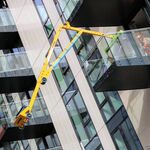An environmental assessment needs a detailed project proposal, with alternatives provided for many factors, such as route, so several million of proponent (read: public) dollars already spend. So we want this before a need is identified?
I'm going to let this go since it is becoming a tad circular. If there is, in fact, a potential market for folks to go day tripping, camping, canoeing, kayaking, etc. via bus, from wherever to wherever, I welcome a private carrier to have at it. If the desire is for this to be publicly financed, either/or initially or operating, I suggest the not-unlimited public dollars are better spent elsewhere. I'm all for public dollars spent for a public good and need not be operated in the black; but I suggest recreation is pretty low on the list of priorities. We have seen several examples of short lines, with rails and customers in place, struggle to make a go of it without subsidization of some kind. Cheers.




